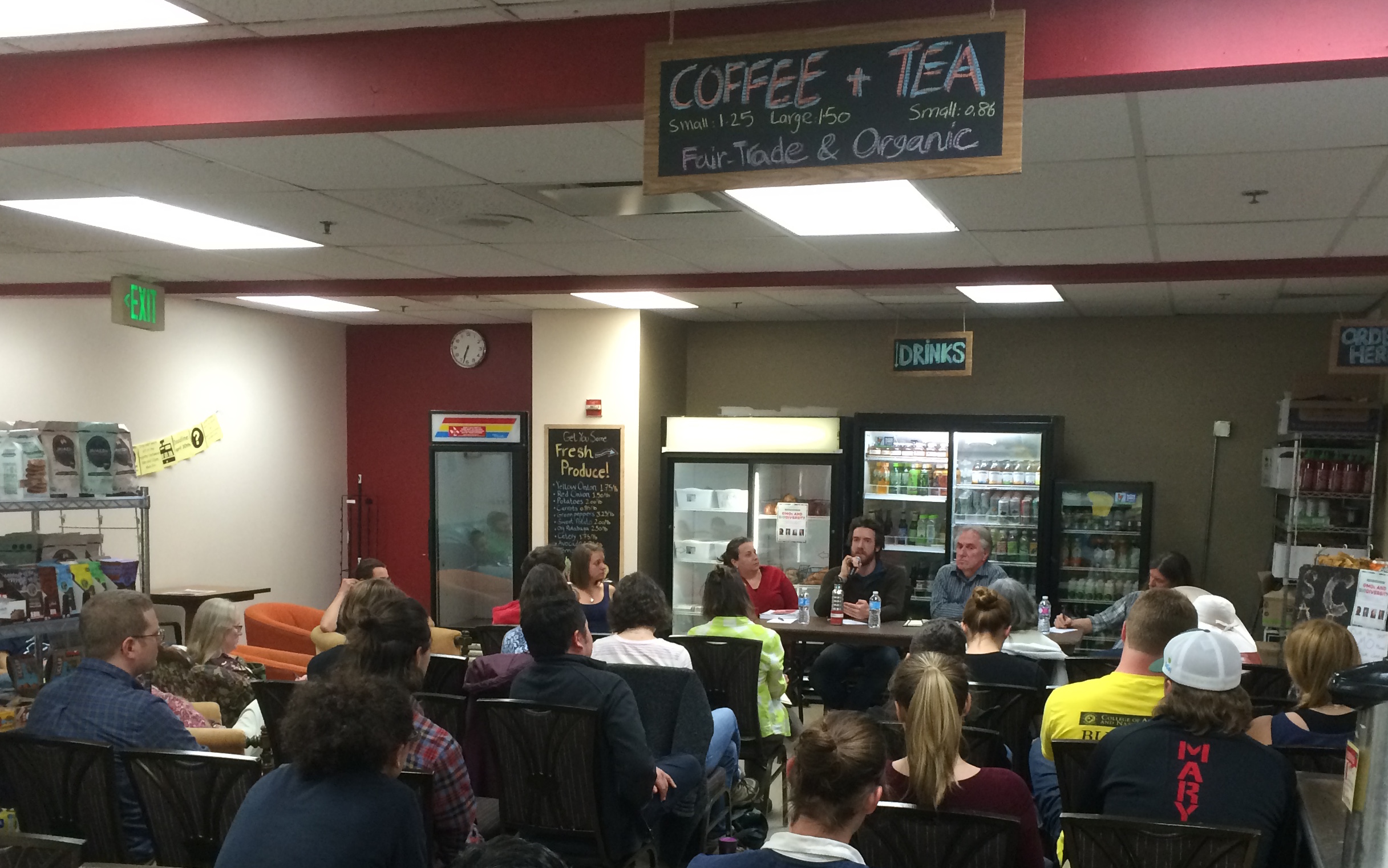By James Whitlow
For the Diamondback
Behind four panelists discussing the viability of genetically modified organisms and organic food was a sticker advertising the Non-GMO Project — a nonprofit that advocates alternatives to genetically modified crops.
And at the GMO and biodiversity event Tuesday, part of “Sustainable Ag Tuesdays” at the Maryland Food Collective in Stamp Student Union, the panelists took the same position as that sticker — discussing how genetically modified and organic crops, while sometimes beneficial, are not the only ways to feed a growing world.
“It is not so simple and digital as ‘this is good’ and ‘this is bad,'” Angus Murphy, the University of Maryland’s plant sciences and landscape architecture department chairman, told the crowd of about 30 people. “We have to find a way to do this with our eyes open and using the technology to move forward.”
All of panelists agreed that GMOs are having a pernicious effect on the environment and ecosystem, and because they are a relatively new concept, scientists have yet to see their long-term effects.
“The most serious concern for us … is the speed and variety of which changes are being made,” said G. Paul Blundell, an owner of Southern Exposure Seed Exchange. “It’s hard to make any blanket statement about [GMOs].”
The United States should be devoting more resources to other more traditional plant research, like hybrid technology, he said. Panelists said some business practices of GMO-producing companies make regulation — an already expensive process — difficult.
GMOs are also using a disproportionate amount of research money in the United States, and they have been researched extensively by the European Union over the past 10 years, said Burkhard Schulz, a plant science and landscape architecture professor.
The concept of organic vegetables also came up during the panel. Patty Lovera, assistant director of the advocacy group Food & Water Watch, said she believes they are more nutritious than traditionally grown plants but are also more expensive, which poses a problem for lower-income Americans trying to eat healthy.
Schulz disagreed with Lovera, saying Americans spend less money on food than any other country. According to the U.S. Department of Agriculture, 6.5 percent of American consumer expenditures were on food in 2014.
While organic food is perceived to be healthier and tastier, it has no basis in scientific fact, Schulz said — organic farmers use pesticides just as much as other farmers, or more.
“The myth that there are no pesticides … sprayed on organic production is just not true,” he said.
Organic farms spray pesticides on their crops weekly — sometime daily — because their plants are not as genetically hearty as GMOs can be, Schulz said. He also said organic foods are neither more healthy nor more nutritious, and the U.S. Food and Drug Administration cooked up organic foods as a marketing ploy.
Lillian Kahl, a freshman sustainable agriculture student, said the talk was effective at highlighting the topic’s massive scope.
“It’s such a vast topic that is integrated into so many levels of the system in our lives,” she said. “It’s just a huge issue that can’t be solved with just one simple answer.”
While the spirited discussion yielded no hard-and-fast answers, the panelists said they remain optimistic about the future.
“There is a solution out there, and we’re not just doomed to slowly perish,” Blundell said. “But that’s just me.”



